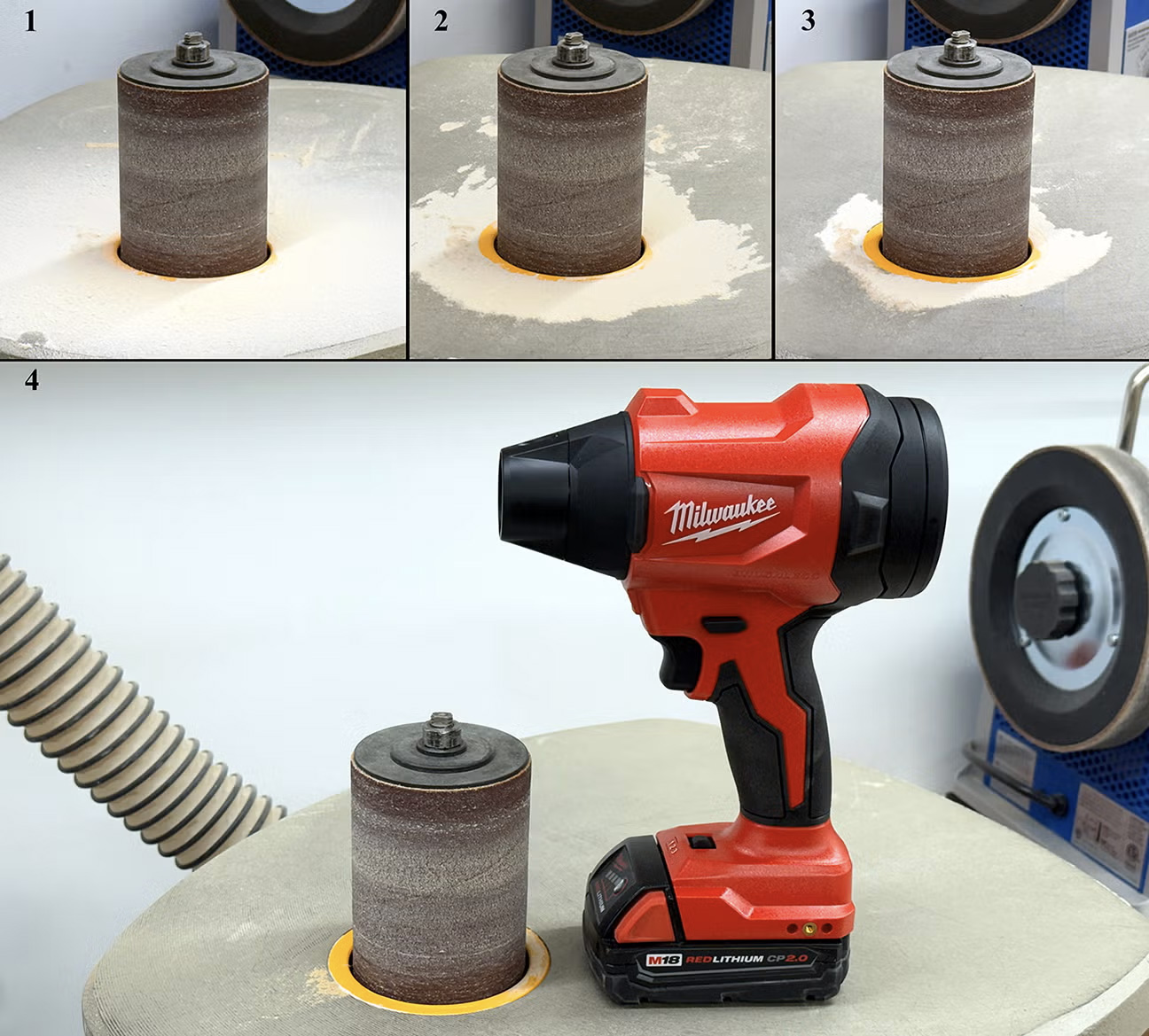We may receive a commission when you use our affiliate links. However, this does not impact our recommendations.
Gluing up narrow boards into big panels stresses out many beginning woodworkers. Sorry to say it, but I have another stressor to put on your shoulders: Don’t tarry. Schnell. Andele.
Large panels are like manicured lawns. Right after you mow and trim your yard, it looks like a golf course or a military haircut. But within minutes or hours, the blades of grass and weeds begin to move and grow, and your lawn looks like the members of Quiet Riot on a bad hair day.
If you want to save a lot of time when gluing and processing panels, you need to commit to jointing, planing, edging, gluing and clamping them all within a short period of time. And, if you aren’t out of breath by the end of that process, smooth planing them on that same day is a capital idea.
Why? Every board is a bundle of fibers that are in tension – sometimes slight; sometimes not. And these fibers have a certain amount of moisture in them.
So when you process a stick of wood, you remove fibers that can release tension. You can expose areas that are wetter than the core. A crappy piece of lumber (that is case hardened, compression wood or reaction wood) will move in seconds and assume a terrible new shape. Good lumber will take its time and will make small adjustments – a tiny cup, a tiny bow, maybe a little twist.
But little changes will make it more difficult to glue, clamp and plane the wood. A .003” cup or twist can ruin your whole day – doubling or tripling the time it takes to get a smooth surface.
So my strategy when making panels is to do everything in one fell swoop. I start with rough lumber that is fully acclimatized. I crosscut it, joint it, plane it, edge it and glue it all without stopping. If I have daylight left, I’ll smooth plane it after the glue cures.
I know that this is contrary to a strategy where you plane all the wood to a certain size, let it acclimate again and then plane it again to final shape. This works, but it is much slower and it still requires you to work quickly at the final stages if you want to make smooth-planing easier.
I started the panels shown in the photo above at 10 a.m. (plus one more panel ) and kept at it until 4:30 p.m. with everything in the clamps and flat. Now I have to decide if I have the energy to smooth plane them today or wait until tomorrow.
— Christopher Schwarz
Here are some supplies and tools we find essential in our everyday work around the shop. We may receive a commission from sales referred by our links; however, we have carefully selected these products for their usefulness and quality.














Chris,
In a previous post you wrote about modern benches length and width that are usually to long and wide.
The bench in this picture is smaller than most benches. Is it what you used on this project to plane
the panels when ready?
Has nothing to do with the real content of the post, but 3 random things:
Wow that is some metal working vise on that bench.
Also neat the lathe with the wood bed. In the preservation carpentry dept at the school we hd a huge one with a wood bed for turning columns. 🙂
And last one is really random but I have a ton of that same generation old style K-body clamps and I still like them 10x better than the Body revo which has different thickness pads, those useless glue pads that fall off and was assembled in America instead of Germany though even more expensive than ever. I’ve also seen the new lower tier Uniklamp and new K-body Junior and would much rather have the tried and true old k bodies. Ok, stepping off my soapbox.
Chris please tell me the metal vise behind the panels is just sitting on your beautiful bench and not screwed in place 🙂
So who is responsible for the wait to acclimate BS I just checked Tage Frid Teaches Woodworking book and it wasn’t him so ….Hayward doesn’t give a crap about glue ups and doesn’t address the subject in The Complete Book of Woodwork soft cover maybe in the LAP 4 edition series but that is in the house and DeCristoforo in the Complete Book of Joinery gives no tips to wait after roughing to dimension to glue up. So I checked a few of the books I have in the shop and could not find after a quick search of Blackburn,Tolpin,Tesolin,Fidgen,Schwarz ,Krenov, but he lived with his wood for 20 years or more so that doesn’t count. Nope it seems it live in the ether. So I guess the waiting to glue up after milling has been a experience of a few folks on forums after a few potato chip glue ups. I duno I just know that when a glue up goes sideways I end up with with pretty firewood. And yes hide glue does glow different than pva.
How long do you let the glue cure until you remove the clamps and plane?
Are you using old brown glue?
i thought is usually 24 hours in clamps before stressing joints.